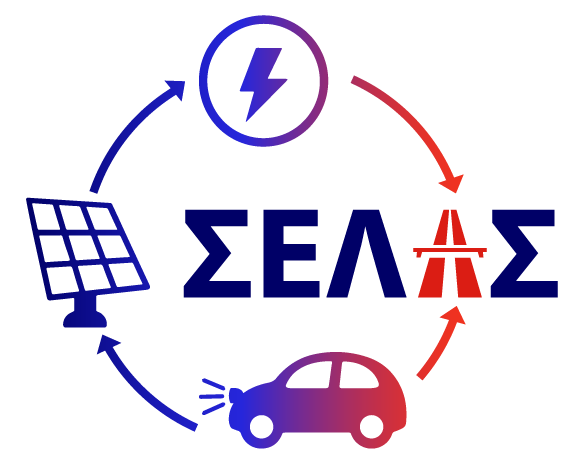The ΣΕΛΑΣ project seeks to study, exploit and incorporate new PV technology into existing motorway infrastructure to meet some of these energy needs. For the first time in the world, the application and efficient operation of these new photovoltaic systems in the night (Photovoltaics in the night) will be explored, utilizing the diffused light of various light sources (eg car lights, motorway lighting). The energy produced during the 24 hours will be channeled through a suitable battery system intelligently so as to best cover the needs of the loads and at the same time fully meet the resulting technical constraints. The motorways offer some strategic advantages for the use of energy from RES, such as the operation of existing electrical infrastructure as well as easy access for repairs and maintenance. However, various factors may adversely affect the application of conventional PV collectors to such infrastructures (eg strong snow accumulation and deposition, glare from solar panels, water management to clean the collectors, necessary strong light intensity). The object of Sella is to address all the above challenges by creating an integrated system for the production and intelligent distribution of energy from PV elements. which will be used to power critical infrastructure on motorways.
The following functions are to be implemented:
- The cloud based Central Automated Management Platform will receive data of the loads (historical and real time) to be fed (Toll Stations / Parking Areas) from the respective subsystems, as well as data related to the climate and traffic conditions as well as the charging state of the accumulators.
- All the above information will be analyzed and the forecast of short and long term needs of loads will be implemented and therefore the battery charge level will be selected to meet specific needs taking into account technical constraints. In addition, through innovative engineering learning techniques, future errors will be predicted, linking information from the SELS subsystems and historical data from similar PV plants.
- The platform will simulate algorithmic processes and mechanisms to cope with the challenges of a system shift across the entire motorway network while introducing new technologies such as electric cars and smart grids into smart grids.
Innovative photovoltaic devices will be installed on existing motorway infrastructure, without burdening the architecture and the surrounding area, in a position appropriate to achieving optimal electricity production without compromising on-board safety.
Objective 1: Implement photovoltaic devices capable of producing electricity and at night, utilizing the lighting of passing vehicles as well as artificial illumination of motorway infrastructure
Objective 2: Develop an intelligent tool for analyzing, modeling, forecasting and automating the co-ordination of the operation of the proposed distributed energy sources and consumptions
Objective 3: Customize a modern energy storage system using state-of-the-art batteries
Objective 4: Assess and demonstrate the proper functioning of the proposed ecosystem in real conditions through a pilot implementation of the Egnatia Motorway.

